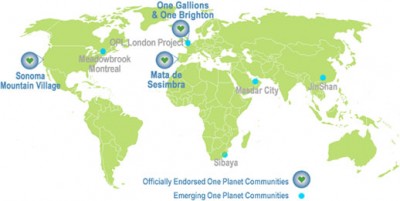Ten defining principles for a true green community

There’s a ton of buzz on green communities sprouting up everywhere, and while the US Green Building Council provides LEED standards for neighborhoods, it’s not nearly the benchmark that the BioRegional Development Group provides. Their ten One Planet Living Communities principles start at zero net carbon and go from there:
Zero Carbon – Zero net CO2 commissions via on-site renewable energy, supplemented by off-site renewable energy if needed.
Zero Waste – Eliminate need for landfill or incineration, emphasize recycling and composting.
Sustainable Transport – Provide infrastructure not requiring private vehicles, offset air and car travel.
Local and Sustainable Materials – Use local, reclaimed, renewable and recycled materials in construction and products resulting in a net positive impact on the environment and local economy.
Local and Sustainable Food – Support local and low impact food production resulting in a net positive impact on the environment and local economy.
Sustainable Water – Reduce, re-use and recycle resulting in a net positive supply.
Natural Habitats and Wildlife – Protect or regenerate existing natural environments, create new habitats, resulting in a net positive impact.
Culture and Heritage – Preserve local and regional identity (ie local independent businesses, events, culture)
Equity and Fair Trade – Ensure that the community’s impact on other communities is positive.
Health and Happiness – Promote healthy lifestyles and physical, mental and spiritual. See Copenhagen for an example.
As the map shows, only three modern-day communities qualify, and they don’t even exist yet. Of course, the designations are a bit hypocritical in that these communities are built on farm land or wilderness, but achieving the ten principles despite that is nothing short of monumental.

Leave a Reply